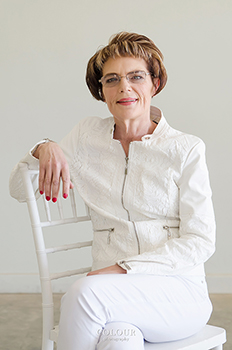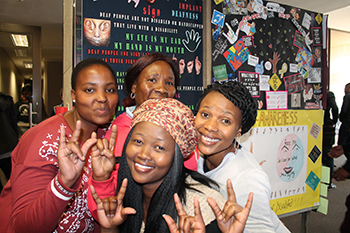
Dr Magteld Smith, lecturer in the
Department of Otorhinolaryngology
at the University of the Free State (UFS)
Photo: Supplied
One of the most common, misunderstood and neglected birth defects in developing countries is hearing loss, which can most severely impair and have a dramatic impact of the quality of life the of the person with hearing loss.
This is according to Dr Magteld Smith, lecturer in the Department of Otorhinolaryngology at the University of the Free State (UFS).
“Hearing loss refers to all the different types and levels of hearing loss, from slight to profound hearing loss,” she said.
Derived from a number of retrospective studies in South Africa, it was found 17 people a day are born with hearing loss. More than 95% of those children are born to hearing parents. This estimate excludes children and adults who lost their hearing after birth.
According to Dr Smith, hearing loss strikes at the very essence of being human, because it hinders communication with others. To enable people to communicate with those with hearing loss, the university’s Department of South African Sign Language teaches students sign language. This year, the department enrolled 230 students. A number of these students are from the Faculty of Education. These students could from 2017 for the first time choose sign language as a subject.
“Studies have shown that important language skills are learned before the age of three because hearing and learning language are closely tied together. Brain development of the auditory pathways and language cortex is occurring in young children as they respond to auditory and visual language. In families that are part of deaf culture, these parents automatically sign from day one, so the baby is learning visual (sign) language, and the appropriate brain development is occurring.
 About 230 students are enrolled for the subject, South African
About 230 students are enrolled for the subject, South African
Sign Language, at the UFS. As an assignment some of the students
were asked to design posters to create deaf awareness among
others on campus. From the left are: Poleliso Mpahane,
Masajin Koalepe, Ntshitsa Mosase, and Zoleka Ncamane.
Photo: Leonie Bolleurs
“However, if a child has an undiagnosed hearing loss and the parents are unaware, the child will not receive the needed language stimulation — and the hoped-for development won’t take place. It is critical to understand that children with hearing loss have their own talents, different levels of intelligence, socioeconomic circumstances and different abilities, just like hearing children. Therefore, one size does not fit all,” Dr Smith said.